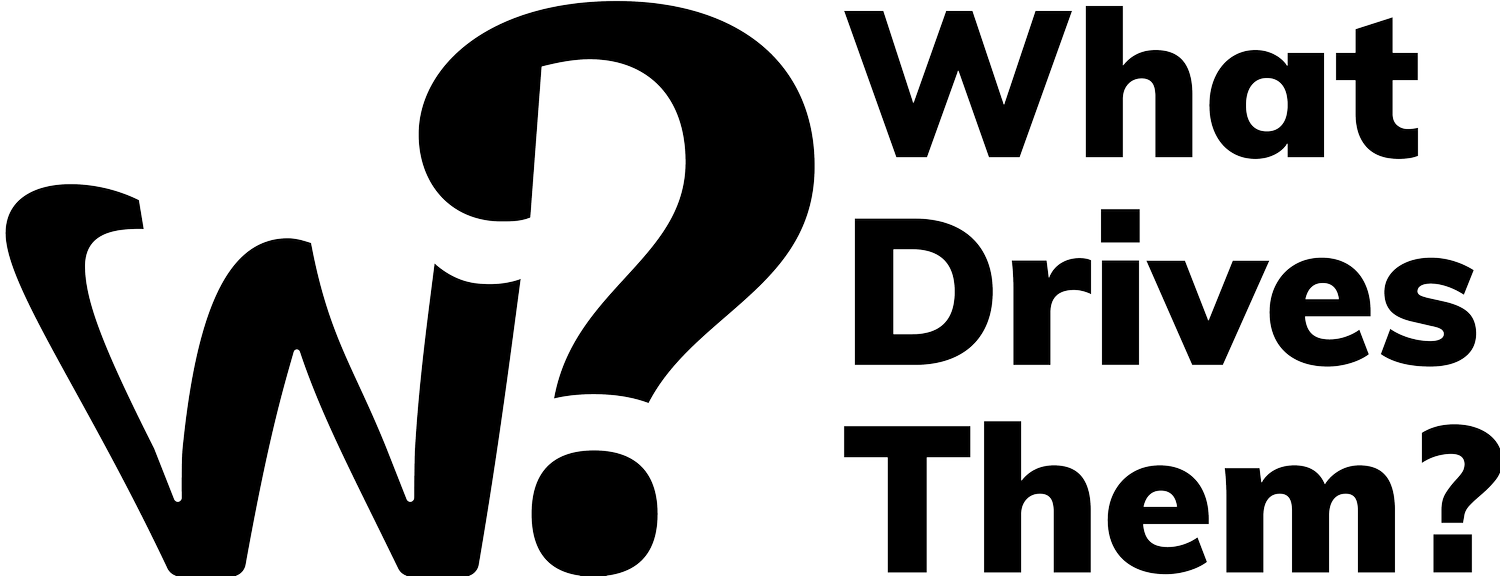Deceptive by design - is your company being unethical?
In the digital age, companies are constantly vying for the attention and trust of consumers. While the goal is to create seamless, user-friendly experiences, some companies resort to deceptive design principles to manipulate consumer behavior. These tactics, often termed "dark patterns," can be not only unethical but detrimental to long-term business success.
In this article, we'll explore what deceptive design is, why companies use it, and how to identify and avoid unethical practices in your own design processes.
What is Deceptive Design?
by Visax (https://unsplash.com/@visaxslr)
Deceptive design refers to user interface and experience designs that are crafted to trick users into taking actions they might not otherwise take. This can range from subtle psychological nudges to outright misleading information. The term "dark patterns" was coined by UX designer Harry Brignall, who has been a vocal critic of these manipulative tactics.
The Origin of Dark Patterns
Harry Brignall first introduced the term "dark patterns" in 2010. His goal was to bring awareness to unethical design practices that manipulate users. By creating a specific term, Brignall aimed to make it easier for both consumers and designers to recognize and discuss these issues.
Psychological Manipulation
Deceptive design often leverages human psychology to trick users. This can include exploiting cognitive biases or using emotional triggers. Understanding these psychological tactics can help designers avoid unethical practices and create more transparent user experiences.
Legal Implications
Using deceptive design isn't just unethical; it can also be illegal. Various jurisdictions have laws against misleading advertising and fraudulent practices. Companies caught using dark patterns may face legal actions, fines, and a loss of consumer trust.
Ethical vs. Unethical Design
While the line between ethical and unethical design can sometimes be blurry, it's crucial to strive for transparency and user-centric practices. Ethical design respects user autonomy and fosters long-term trust. Unethical design, on the other hand, prioritizes short-term gains at the expense of user experience and trust.
Common Types of Dark Patterns
Understanding the various forms that deceptive design can take is the first step in identifying and avoiding them.
Bait and Switch
This tactic involves advertising one thing but delivering something else. For example, a website might advertise a free trial but then require payment details upfront, making it difficult to cancel before being charged. This not only frustrates users but also undermines their trust in the brand.
by Samsung Memory (https://unsplash.com/@samsungmemory)
In addition to online subscriptions, bait and switch can occur in e-commerce. A product might be advertised at a low price, but once you add it to your cart, additional fees or higher prices appear. This tactic can lead to abandoned carts and negative reviews.
Another example is job listings. Companies might advertise a high-paying position, but during the interview process, the job description and salary significantly change. This not only wastes the applicant's time but can also damage the company's reputation.
Confirm Shaming
This involves using guilt or shame to manipulate users into taking a desired action. For instance, a pop-up might say, "No, I don't want to save money" as the opt-out option for a discount newsletter. This tactic preys on users' emotions to drive conversions.
by Elena Mozhvilo (https://unsplash.com/@miracleday)
Confirm shaming isn't limited to newsletters. It can also appear in charity donations, where users are guilted into contributing. For instance, the opt-out option might read, "No, I don't care about helping children," which can be emotionally manipulative.
Another form of confirm shaming occurs in health and fitness apps. Users might be prompted to upgrade their plan with opt-out phrases like, "No, I don't want to improve my health." This tactic can lead to user dissatisfaction and negative app reviews.
Friend Spam
Here, a service might ask for your email contacts to "find friends" but then send unsolicited emails to those contacts, making it appear as if you endorsed the service. This not only invades your privacy but also damages your reputation among friends and colleagues.
by Ben White (https://unsplash.com/@benwhitephotography)
Friend spam can also occur on social media platforms. Users might be prompted to connect their accounts to find friends, only to have their contacts spammed with invitations. This can lead to annoyed friends and a tarnished reputation.
Another example is mobile apps that request access to your contacts. Once granted, the app might send unsolicited messages or invites to your contacts, making it seem like you endorsed the app. This can result in negative reviews and decreased user trust.
Hidden Costs
These are extra charges that appear only at the last step of a checkout process, catching the user off-guard and making them feel committed to the purchase. Hidden costs can include shipping fees, taxes, or additional service charges that weren't disclosed upfront.
by Carlos Alberto Gómez Iñiguez (https://unsplash.com/@iniguez)
Hidden costs can also appear in subscription services. Users might sign up for a trial, only to discover additional fees after the trial period ends. This tactic can lead to high churn rates and negative reviews.
In travel booking sites, hidden costs are a common issue. Users might find a great deal on a flight or hotel, only to see additional fees like baggage charges or resort fees during checkout. This can lead to abandoned bookings and frustrated customers.
Disguised Ads
These are advertisements that look like regular content or navigation links, tricking users into clicking on them. This deceptive practice not only frustrates users but also undermines trust in the platform.
by Nicolai Berntsen (https://unsplash.com/@nicolaiberntsen)
Disguised ads can also appear in email newsletters. Users might click on what they think is an article link, only to be redirected to an advertisement. This can lead to lower engagement rates and increased unsubscribe rates.
Another example is mobile apps that disguise ads as game rewards. Users might watch an ad thinking they'll receive in-game currency, only to be disappointed. This can result in negative reviews and decreased app usage.
Misdirection
This involves focusing the user's attention on one thing to distract them from another. For instance, making the "Accept" button more prominent than the "Decline" button in a terms and conditions pop-up. Misdirection can lead to uninformed decisions and decreased user trust.
by Kaung Myat Min (https://unsplash.com/@100pingissues)
Misdirection can also occur in online forms. Users might be prompted to fill out a survey, with the primary call-to-action being more prominent than the opt-out option. This can result in skewed survey data and frustrated users.
In e-commerce, misdirection can be used to upsell products. Users might be shown a prominent "Add to Cart" button for an additional item, while the "No Thanks" option is less visible. This tactic can lead to higher cart abandonment rates.
Privacy Zuckering
Named after Facebook's Mark Zuckerberg, this involves tricking users into sharing more information than they intended. This can happen through confusing privacy settings or default options that favor data sharing. Privacy zuckering undermines user trust and can lead to privacy breaches.
by Glen Carrie (https://unsplash.com/@glencarrie)
Privacy zuckering can also occur in mobile apps. Users might be prompted to grant extensive permissions during installation, without a clear explanation of why the app needs that data. This can lead to decreased app usage and negative reviews.
Another example is online surveys that collect more data than necessary. Users might be asked for personal information unrelated to the survey topic, leading to privacy concerns. This can result in lower response rates and decreased trust in the survey provider.
Roach Motel
This is a situation where it's easy to get into something but hard to get out. For example, subscribing to a service might be straightforward, but canceling the subscription could be intentionally complicated. Roach motel tactics can lead to frustrated users and negative reviews.
by Luke (https://unsplash.com/@reverb712)
Roach motel tactics can also appear in mobile apps. Users might find it easy to sign up for a premium subscription, but difficult to cancel through the app. This can lead to high churn rates and negative app reviews.
Another example is online memberships. Users might sign up for a trial, only to find the cancellation process hidden or complicated. This can result in decreased user trust and lower retention rates.
Why Do Companies Use Deceptive Design?
by Kelly Sikkema (https://unsplash.com/@kellysikkema)
Companies often resort to deceptive design for short-term gains. These tactics can increase user engagement, boost conversion rates, and generate more revenue. However, the long-term costs can be significant, including loss of customer trust, negative reviews, and even legal repercussions.
The Psychology Behind Deceptive Design
Deceptive design leverages consumer psychology to manipulate behavior. Understanding these psychological triggers can help designers and product owners create ethical, user-friendly experiences.
Scarcity and Urgency
Creating a sense of scarcity or urgency can compel users to make quick decisions. However, artificially inflating scarcity or urgency is a common deceptive tactic. This can lead to buyer's remorse and decreased trust in the brand.
by Markus Spiske (https://unsplash.com/@markusspiske)
Scarcity and urgency can also appear in online sales. Limited-time offers or countdown timers can create a sense of urgency, pushing users to purchase. However, if these tactics are used deceptively, they can lead to negative reviews and lower conversion rates.
Another example is event ticket sales. Users might be shown a limited number of available tickets, creating a sense of scarcity. If this tactic is used deceptively, it can lead to decreased trust and lower attendance rates.
Social Proof
Showing that others are using a product or service can encourage adoption. When used deceptively, such as fake reviews or inflated user numbers, it can mislead consumers. This can result in negative reviews and decreased trust in the brand.
by Sticker Mule (https://unsplash.com/@stickermule)
Social proof can also be used in online courses. Users might see testimonials or student numbers that are exaggerated or fake. This can lead to lower course completion rates and negative reviews.
Another example is e-commerce. Products might display fake reviews or inflated ratings to encourage purchases. This can result in high return rates and decreased customer trust.
Loss Aversion
People are more motivated to avoid losses than to acquire gains. Deceptive designs often highlight potential losses to push users towards a desired action. This can lead to buyer's remorse and decreased trust in the brand.
by Gabe Pierce (https://unsplash.com/@gaberce)
Loss aversion can also appear in subscription services. Users might be warned about losing access to premium features if they don't renew, creating a sense of urgency. If this tactic is used deceptively, it can lead to high churn rates and negative reviews.
Another example is online forms. Users might be warned about losing their progress if they don't complete the form, pushing them to finish. This can result in lower form completion rates and decreased trust in the platform.
Real-World Examples of Dark Patterns
by Sandhya Ratnam (https://unsplash.com/@sratnam)
LinkedIn's Friend Spam
LinkedIn was criticized for its "Add Connections" feature, which sent out invitations to all email contacts without clear user consent. This led to lawsuits and a significant loss of trust. Users felt their privacy was violated, and many received negative feedback from their contacts.
by Ben Duchac (https://unsplash.com/@benshares)
The fallout from this incident was significant. LinkedIn faced multiple lawsuits and had to pay millions in settlements. Additionally, the company's reputation took a hit, leading to decreased user engagement and trust.
To recover, LinkedIn implemented clearer consent processes and

